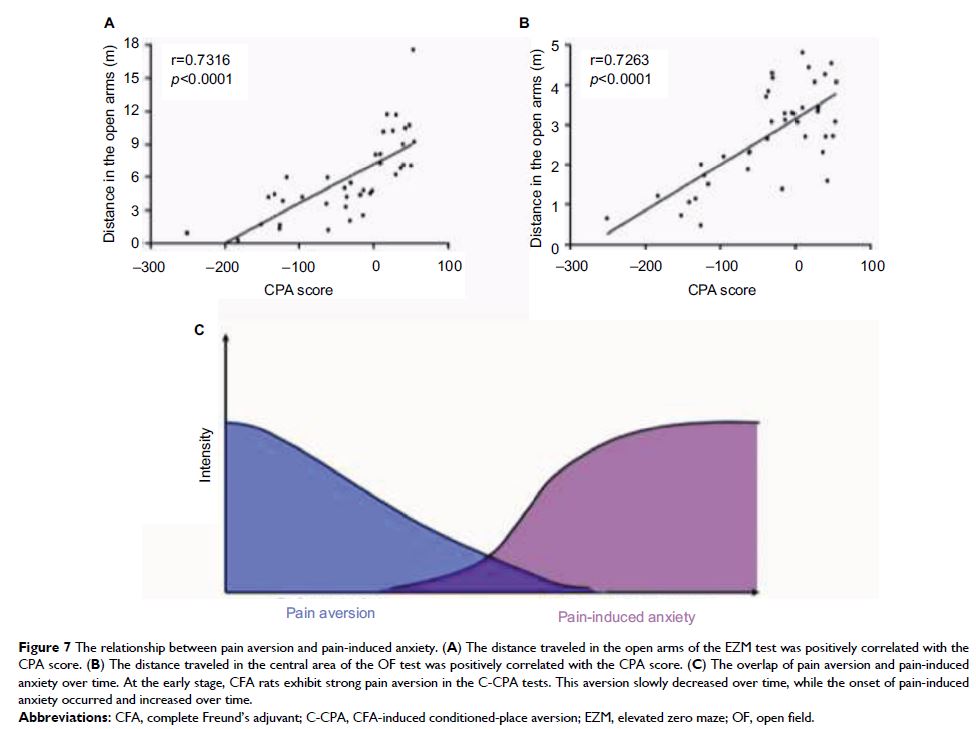9 0 5 7 8
论文已发表
注册即可获取德孚的最新动态
IF 收录期刊
- 2.6 Breast Cancer (Dove Med Press)
- 3.9 Clin Epidemiol
- 3.3 Cancer Manag Res
- 3.9 Infect Drug Resist
- 3.6 Clin Interv Aging
- 4.8 Drug Des Dev Ther
- 2.8 Int J Chronic Obstr
- 8.0 Int J Nanomed
- 2.3 Int J Women's Health
- 3.2 Neuropsych Dis Treat
- 4.0 OncoTargets Ther
- 2.2 Patient Prefer Adher
- 2.8 Ther Clin Risk Manag
- 2.7 J Pain Res
- 3.3 Diabet Metab Synd Ob
- 4.3 Psychol Res Behav Ma
- 3.4 Nat Sci Sleep
- 1.9 Pharmgenomics Pers Med
- 3.5 Risk Manag Healthc Policy
- 4.5 J Inflamm Res
- 2.3 Int J Gen Med
- 4.1 J Hepatocell Carcinoma
- 3.2 J Asthma Allergy
- 2.3 Clin Cosmet Investig Dermatol
- 3.3 J Multidiscip Healthc

已发表论文
在大鼠慢性炎性疼痛过程中不同时期出现的疼痛厌恶和类似焦虑的行为
Authors Wu YY, Yao XM, Jiang YL, He XF, Shao XM, Du JY, Shen Z, He QY, Fang JQ
Received 14 April 2017
Accepted for publication 19 July 2017
Published 6 November 2017 Volume 2017:10 Pages 2585—2593
DOI https://doi.org/10.2147/JPR.S139679
Checked for plagiarism Yes
Review by Single-blind
Peer reviewers approved by Dr Colin Mak
Peer reviewer comments 2
Editor who approved publication: Dr Katherine Hanlon
Abstract: Pain is
considered a multidimensional conscious experience that includes a sensory
component and a negative affective-motivational component. The negative
affective-motivational component of pain is different from the sensory
component and amplifies the pain experience. Nowadays, a significant number of
preclinical research groups have focused their attention on the affective symptoms
of pain. In the present study, we investigated the pain aversion and
anxiety-like behavior of the complete Freund’s adjuvant (CFA)-induced chronic
pain model. CFA rats experienced spontaneous pain during pain-paired
conditioning (pain aversion) and spontaneous pain produces an affective
response (anxiety-like behavior). Moreover, pain aversion was gradually
attenuated, while the anxiety-like behavior increased in 4 weeks. Therefore,
although the negative effect (including pain aversion and anxiety) is always
associated with hyperalgesia, the manifestations of negative effect may follow
different time courses, which may influence the progress of primary disease.
The findings illustrate that targeted therapy should focus on a specific aspect
in different stages of pain. Our study emphasizes the necessity of using
multiple tests to study pain comorbidities.
Keywords: pain, pain aversion, pain affection, anxiety-like behavior, chronic inflammatory pain, rat
Keywords: pain, pain aversion, pain affection, anxiety-like behavior, chronic inflammatory pain, rat
